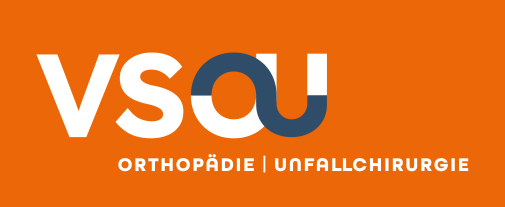Übersichtsarbeiten - OUP 10/2014
6. Ebbeke P. Belassene Fremdkörper aus Sicht der Op.-Schwester. Chirurg 2007; 78: 13–21
7. Jhawar BS, Mitsis D, Duggal N. Wrong-sided and wrong-level neurosurgery: a national survey. J Neurosurg Spine 2007; 7: 467–472
8. Wong DA, Herndon JH, Canale ST et al. Medical Errors in orthopaedics. Results of an AAOS member survey. J Bone Joint Surg 2009; 91Am: 547–557
9. Bernstein M, Hebert PC, Etchells E. Patient safety in neurosurgery: detection of errors, prevention of errors, and disclosure of errors. Neurosurg Q 2003; 13: 125–137
10. Boström J, Yacoub A, Schramm J. Prospective collection and analysis of error data in a neurosurgical clinic. Clin Neurol Neurosurg 2010; 112: 314–319
11. Reason JT. Human error: models and management. B M J 2000; 320: 768–770
12. Bendavid E, Kaganova Y, Needleman J et al. Complication rates on weekends and weekdays in US hospitals Am J Med 2007; 120: 422–429
13. Nuland SB. Mistakes in the operating room – error and responsibility. N Engl J Med 2004; 351: 1281–1283
14. Sexton JB, Thomas EJ, Heimreich RL. Error, stress and teamwork in medicine and aviation: cross sectional surveys. B M J 2000; 320: 745–749
15. Schwartz D, Fischhoff B, Krishnamurti T et al. The Hwathorne effect and emergency awareness. Proc Natl Acad Sci USA 2013; 110: 15242–15246
16. Gawande AA, Studdert DM, Orav EJ et al. Risk factors for retained instruments and sponges after surgery. N Engl J Med 2003; 348: 229–235
17. Clarke JR, Johnston J, Finley ED. Getting surgery right. Ann Surg 2007; 246: 395–405
18. Haynes AB, Weiser TG, Berry WR et al. A surgery safety checklist to reducemorbidity and mortality in a global population. N Engl J Med 2009; 360: 491–499
19. van Klei WA, Hoff RG, van Aarnheim EE et al. Effects of the introduction of the WHO „Surgical Safety Checklist“ on in-hospital mortality: a cohort study. Ann Surg 2012; 255: 44–49
20. Fudickar A, Hörle K, Wiltfang J et al. „Surgical Safety Checklist“ der Weltgesundheitsorganisation. Auswirkungen auf Komplikationsrate und interdisziplinäre Kommunikation. Dt Ärztebl 2012; 109: 695–701
21. Panesar SS, Noble DJ, Mirza SB et al. Can the surgical checklist reduce the risk of wrong site surgery in orthopedics? Can the checklist help? Supporting evidence from analysis of a national patient incident reporting system. J Orthop Surg Res 2011; 6: 18–23
22. Sewell M, Adebibe M, Jayakumar P et al. Use of the WHO surgical safety checklist in trauma and orthopaedic patients. Int Orthop 2011; 35: 897–90
23. Lessing C. Postoperative Zählkontrollen sind nicht standardisiert. Dt Ärztebl 2012; 109: A372–A373
24. Herndon JH. 2004 ABJS Earl McBride lecture: patient safety: past, present, and future. Clin Orthop 2005; 440: 242–250
25. Egorova NN, Moskowitz A, Gelijns A et al. Managing the prevention of retained surgical instruments: what is the value of counting? Ann Surg 2008; 247: 13–18
26. Rateau F, Levrant L, Colombel AL et al. Checklist „Patient Safety“ in the operating room: one year experience of 40000 surgical procedures at the university hospital of Nice. Ann Fr Anesth Reanim 2011; 30: 479–483
27. Conley DM, Singer SJ, Edmonson L et al. Effective surgical checklist implementation. Am J Coll Surg 2011; 212: 873–879
28. Ruchlin HS, Dubbs NL, Callahan MA. The role of leadership in instilling a culture of safety: lessions from the literature. J Healthc Manag 2004; 49: 47–57
29. Wong J, Khu KJ, Kaderali Z, et al. Delays in the operating room: signs of animperfect system. Can J Surg 2010; 53: 189–195
30. Macario A. What does one minute of operating room time cost? J Clin Anesth 2010; 22: 233–236
Fussnoten
1 Chirurgische Klinik II: Unfall-, Hand- und Wiederherstellungschirurgie
2 Klinik für Anästhesie, Intensivmedizin und Schmerztherapie, Verbundkrankenhaus Bernkastel – Wittlich
